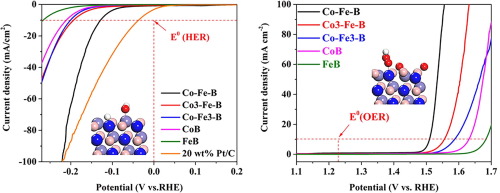A new study by the Institute of Advanced Study in Science and Technology (IASST) under the Department of Science and Technology (DST) claims that a bimetallic Nickel-Iron layered double hydroxide system is sufficient for efficient oxygen production through water splitting. This finding challenges the current research trend of seeking trimetallic solutions to boost productivity in this area.
 As renewable energy sources become increasingly important, water splitting stands out as a promising method for generating sustainable energy. It offers an eco-friendly way to produce green hydrogen and oxygen on a large scale without harming the environment.
As renewable energy sources become increasingly important, water splitting stands out as a promising method for generating sustainable energy. It offers an eco-friendly way to produce green hydrogen and oxygen on a large scale without harming the environment.
To enhance water splitting efficiency, scientists from IASST in Guwahati investigated the two critical reactions involved: the hydrogen evolution reaction (HER) and the oxygen evolution reaction (OER). The research, led by Dr. Biswajit Choudhury and primary author Mr. Suvankar Deka, focused on the oxygen evolution capabilities of Nickel-Iron layered double hydroxides (LDH). Improving OER efficiency is crucial for the overall effectiveness of water-splitting processes.
In addition to NiFe LDH, the team synthesized two trimetallic systems, ZnNiFe LDH and CoNiFe LDH, and examined their electrocatalytic activity in 1M KOH. Surprisingly, the OER activity of the trimetallic systems was slower than that of the bimetallic system. The research provided mechanistic insights into the reduced OER performance in marigold-like trimetallic NiFe-based LDH.
Their investigation, accepted for publication in the Journal of Materials Chemistry A, revealed that the reduced activity in the trimetallic systems could be attributed to disruptions in the charge transfer chain of Ni-O-Fe-O-Zn and Ni-O-Fe-O-Co moieties, as well as the confinement of phonons (quantum of vibrational energy). This leads to the trapping of charge carriers, affecting the reaction pathway and kinetics, and resulting in diminished water oxidation activity.
The study suggests that doping the bimetallic NiFe system does not enhance its water splitting efficiency. This finding could help focus future research on improving the bimetallic system for more effective oxygen generation through overall splitting.




